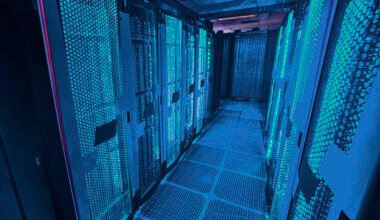As science and technology march forward, the domain of laboratory research is not left behind. The continuous revamping of essential lab equipment is critical for the advancement of scientific research, medical diagnostics, and educational purposes. This article delves into the latest trends that are shaping the future of essential lab equipment.
Refinement and Precision with Micro Pipettes
At the intersection of innovation and functionality lies the micro pipette. This indispensable tool has undergone significant upgrades to meet the demands of modern science. Key trends include enhanced ergonomics for reduced hand fatigue, digital interfaces for improved precision, and the advent of electronic pipettes which offer unparalleled accuracy and repeatability of volume measurements. These trends are pointing towards a new era where quantitative liquid transfer in experiments becomes as precise as never before.
Ensuring Safety and Purity with Lab Glass Bottles
Storage and handling of chemicals remain a pivotal aspect of laboratory operations. Lab glass bottles are the cornerstone of chemically inert and safe containment solutions. The latest advancements include the use of coatings to resist strong acids and solvents, improved sealing techniques to prevent contamination, and advanced labelling systems which integrate RFID tags for easy tracking and inventory management. These innovations ensure that chemicals and reagents maintain their purity over extended periods, crucial for accurate experimental outcomes.
Material Innovations in Lab Beakers
Traditional lab beakers are being transformed by new materials which offer enhanced durability and resistance to thermal shock. Scientists nowadays can work with beakers made from specialised glass or advanced polymers that are less prone to breaking and can withstand extreme temperatures. The design and functionality of beakers are also improving, with features such as precision spouts, reinforced structures, and graduation marks that can resist fading from harsh chemicals.
Automation and Robotics in Laboratory Setups
Automation is taking centre stage in laboratories worldwide. Robots can handle repetitive tasks such as sample preparation, liquid handling, and even perform complex analytical procedures. This not only increases the throughput but also minimises human error, leading to more consistent results. With the incorporation of machine learning and artificial intelligence, these systems are becoming even more efficient and are able to adapt to various protocols swiftly.
Improved Data Management Systems
Data is the lifeblood of scientific research, and its management is of paramount importance. Modern labs are equipped with software that can keep track of voluminous data sets, manage workflows, and ensure regulatory compliance. Cloud-based solutions are growing in popularity, offering scalable storage and remote access to data, thus facilitating greater collaboration across different research settings.
Enhancements in Safety Equipment
The prominence of health and safety in laboratory practices has grown exponentially. Equipment such as fume hoods and biosafety cabinets are witnessing advancements in terms of better airflow management and filters, providing more protection against exposure to hazardous substances. Personal protective equipment is also improving, highlighting materials that offer comfort without compromising safety.
Eco-Friendly and Sustainable Lab Solutions
Environmental consciousness is driving the lab equipment sector to adopt greener practices. Reusable and recyclable materials are gaining traction, reducing the carbon footprint of laboratories. Energy-efficient instruments, waste reduction systems, and biodegradable consumables are part of the emerging trends promoting sustainability in lab operations.
Innovations in Imaging and Microscopy
Imaging technologies have taken giant leaps in the past years with the introduction of high-resolution microscopy and real-time imaging capabilities. Advanced optics, superior sensors, and powerful software are enabling scientists to visualise samples at unparalleled detail and in dynamic environments, opening doors to new discoveries across biology, materials science, and other fields.
Connectivity and the Internet of Things (IoT)
The integration of IoT in the laboratory context is revolutionising how equipment is monitored and controlled. Smart lab equipment can now connect to the internet, enabling remote operation, real-time monitoring, and alerts for maintenance needs. This connectivity is pivotal for workflow optimisation and proactive fault detection.
Education and Demonstration Lab Equipment
Educational institutions are not untouched by these trends. Lab equipment designed for teaching and demonstration purposes are becoming more user-friendly, with interactive elements and digital interfaces to enhance student engagement and learning. Durable, low-cost, and safe equipment are crucial in educational settings to inspire the next generation of scientists.
Final Thoughts
The landscape of laboratory equipment is constantly evolving. With the interplay of automation, material science, data management, and environmental sustainability, essential lab equipment is undergoing a marked transformation. Scientists, educators, and industry professionals must keep abreast of these developments to harness the full potential of their research and operations.
Embracing these trends not only streamlines laboratory procedures but also reinforces safety, enhances the quality of outputs, and supports sustainable practices. As innovations continue to surface, it’s clear that the future of laboratory equipment lies in smarter, safer, and more efficient designs.
The importance of staying informed about the latest trends in lab equipment cannot be overstressed, it is vital for ensuring that scientific endeavours progress with speed, accuracy, and safety. The modern laboratory is an exciting place, brimming with opportunity and innovation, as it meets the challenges of tomorrow with the solutions of today.



